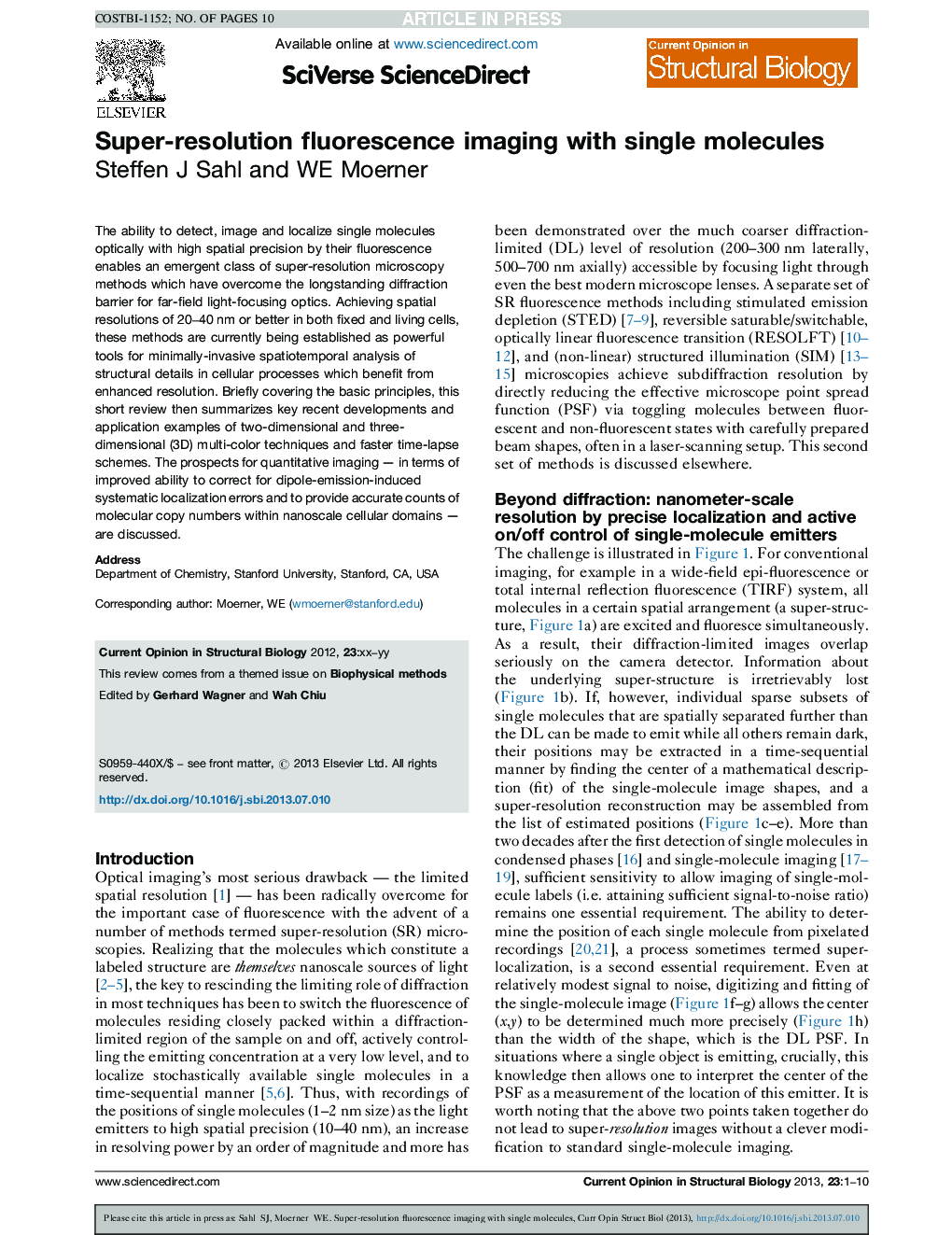| Article ID | Journal | Published Year | Pages | File Type |
|---|---|---|---|---|
| 10822607 | Current Opinion in Structural Biology | 2013 | 10 Pages |
Abstract
The ability to detect, image and localize single molecules optically with high spatial precision by their fluorescence enables an emergent class of super-resolution microscopy methods which have overcome the longstanding diffraction barrier for far-field light-focusing optics. Achieving spatial resolutions of 20-40Â nm or better in both fixed and living cells, these methods are currently being established as powerful tools for minimally-invasive spatiotemporal analysis of structural details in cellular processes which benefit from enhanced resolution. Briefly covering the basic principles, this short review then summarizes key recent developments and application examples of two-dimensional and three-dimensional (3D) multi-color techniques and faster time-lapse schemes. The prospects for quantitative imaging - in terms of improved ability to correct for dipole-emission-induced systematic localization errors and to provide accurate counts of molecular copy numbers within nanoscale cellular domains - are discussed.
Related Topics
Life Sciences
Biochemistry, Genetics and Molecular Biology
Biochemistry
Authors
Steffen J Sahl, WE Moerner,
